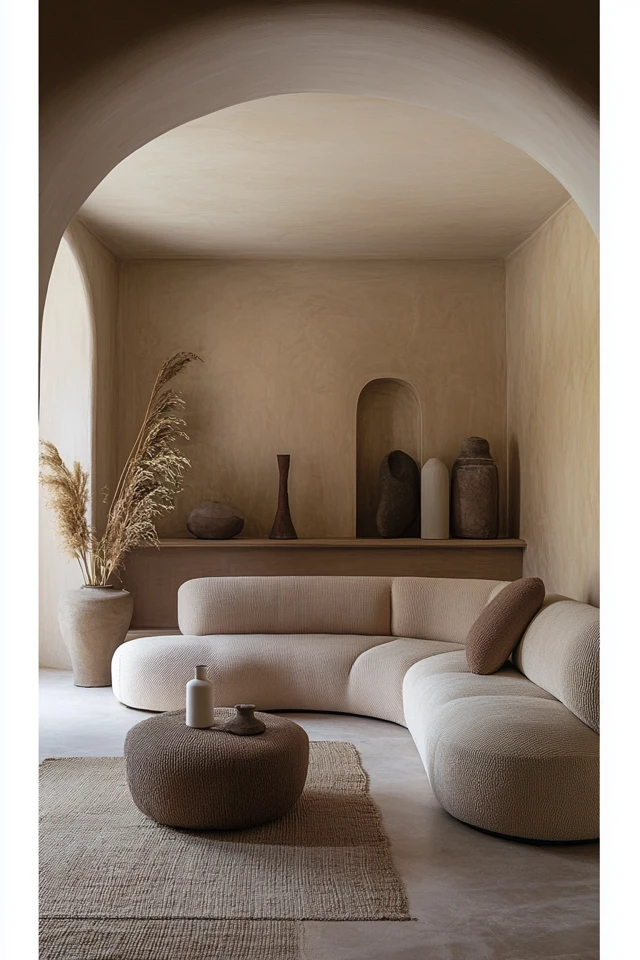Introduction
Straight lines and sharp angles are staples of modern interior design, but they can sometimes create a space that feels rigid or overly structured. Curves, on the other hand, offer a softer, more inviting aesthetic that balances clean geometry with a sense of comfort and fluidity. From arched doorways and rounded furniture to circular decor and curved architectural features, incorporating curves into your design can transform a room, making it feel both contemporary and cozy.
I remember the first time I realized the power of curves in design. My living room was dominated by angular furniture and straight-lined shelving, which felt sleek but a bit cold. I decided to swap out my rectangular coffee table for an oval one and added a round mirror above the sofa. The effect was immediate—the room felt warmer, more dynamic, and infinitely more welcoming. That small change sparked a love for using curves to create spaces that feel soft, balanced, and approachable.
In this guide, we’ll explore how to use curves strategically to add softness and visual interest to your home. Whether you’re incorporating small, subtle details or making bold, architectural statements, curves can help you achieve a space that’s as inviting as it is stylish.
The Perfect Design for You
Using curves to create a softer space look is perfect for anyone who wants their home to feel inviting, balanced, and comfortable. It’s an ideal approach for spaces that feel overly angular or rigid and works beautifully in a variety of styles, from modern to traditional.
Imagine a dining room with an oval table that encourages conversation, surrounded by chairs with curved backs for a sense of intimacy. Or picture a bedroom where a soft, arched headboard adds elegance and coziness, balanced by rounded bedside tables. These subtle touches of curvature bring harmony and flow to your space, making it feel more approachable and relaxing.
Whether you’re designing a minimalist retreat, a rustic sanctuary, or a bold and eclectic space, curves can add the perfect touch of softness and sophistication.
Picture Gallery
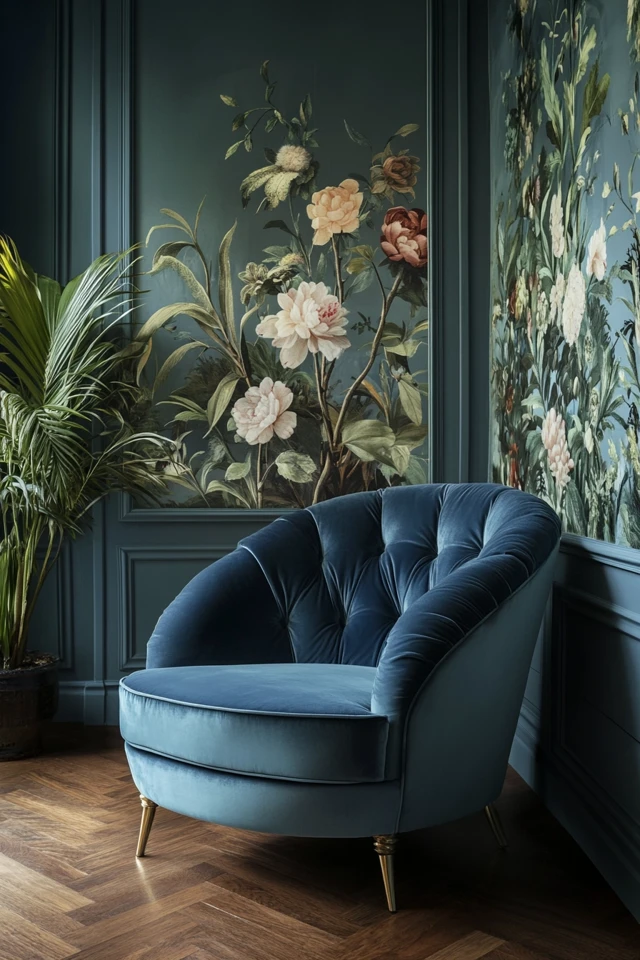
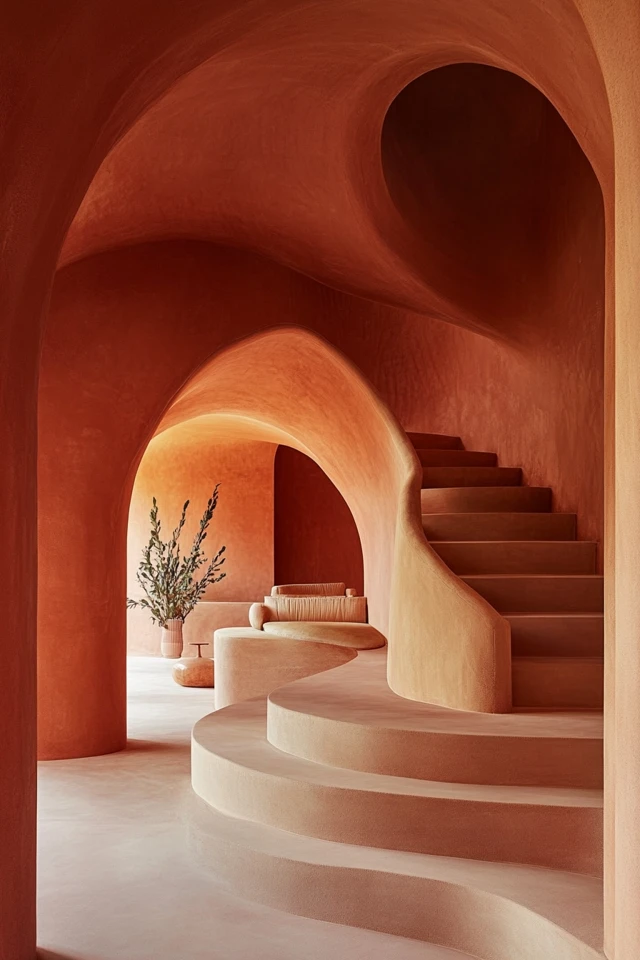

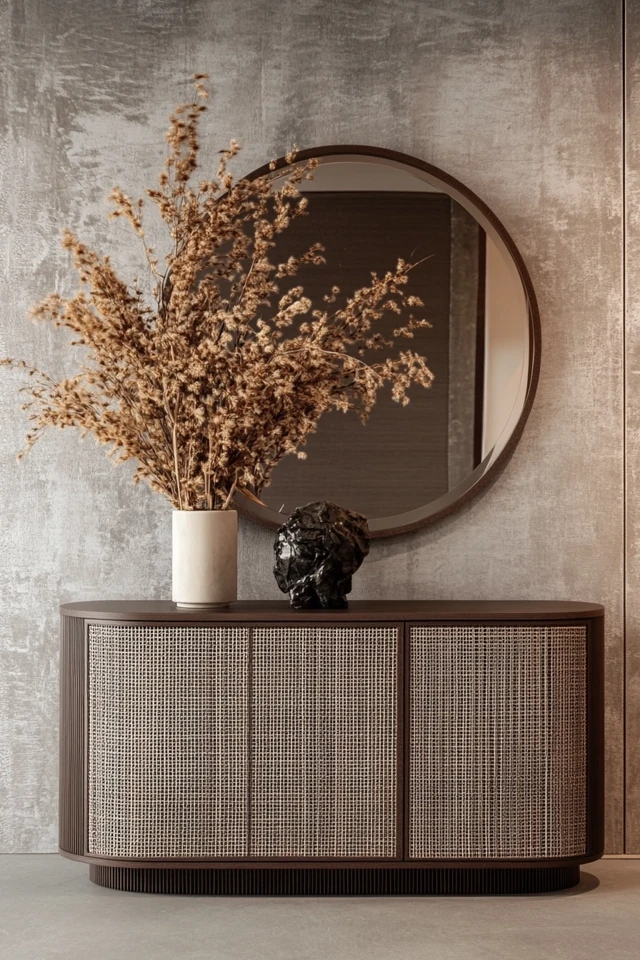
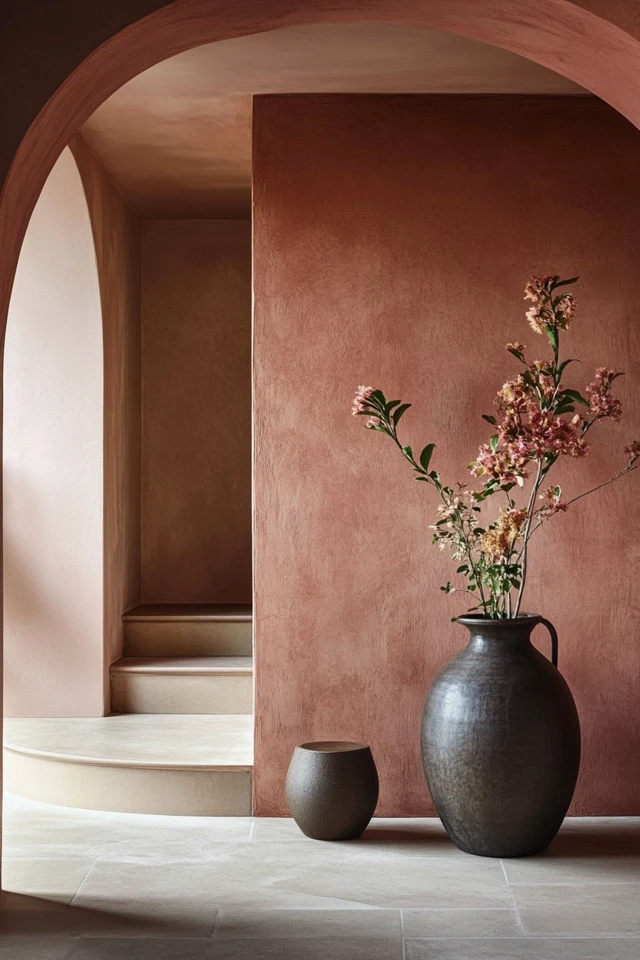
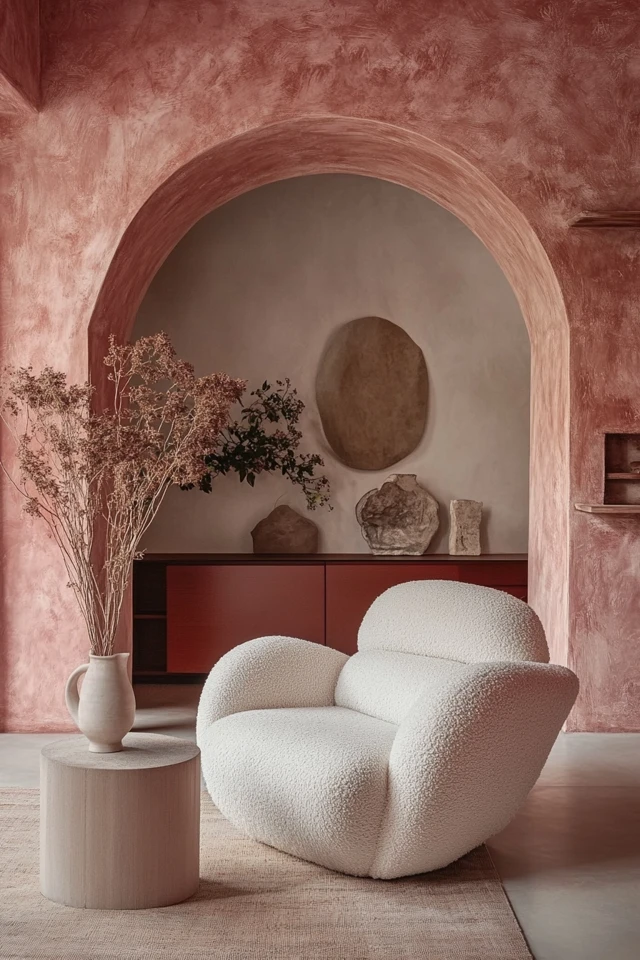
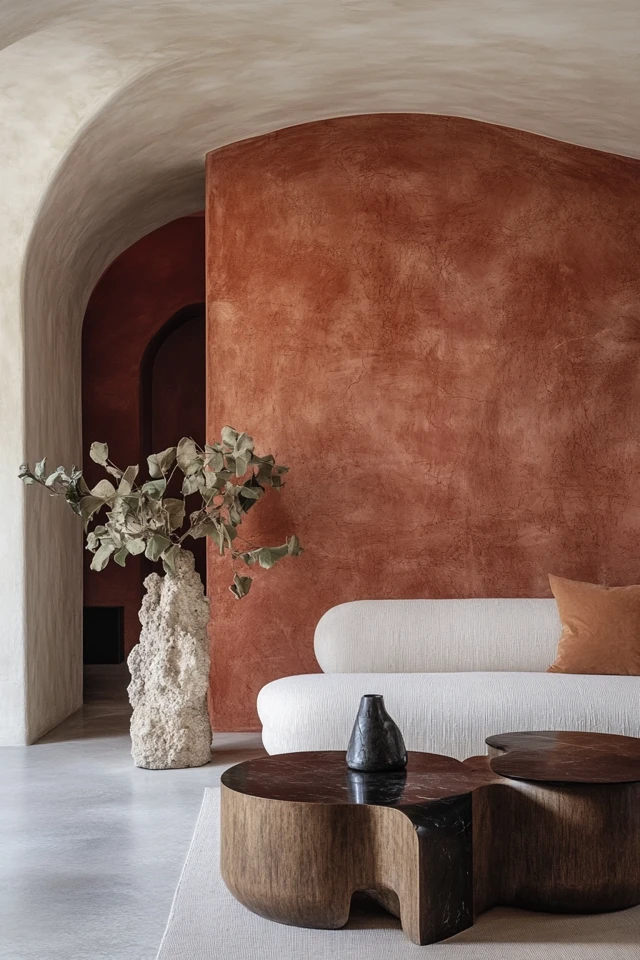
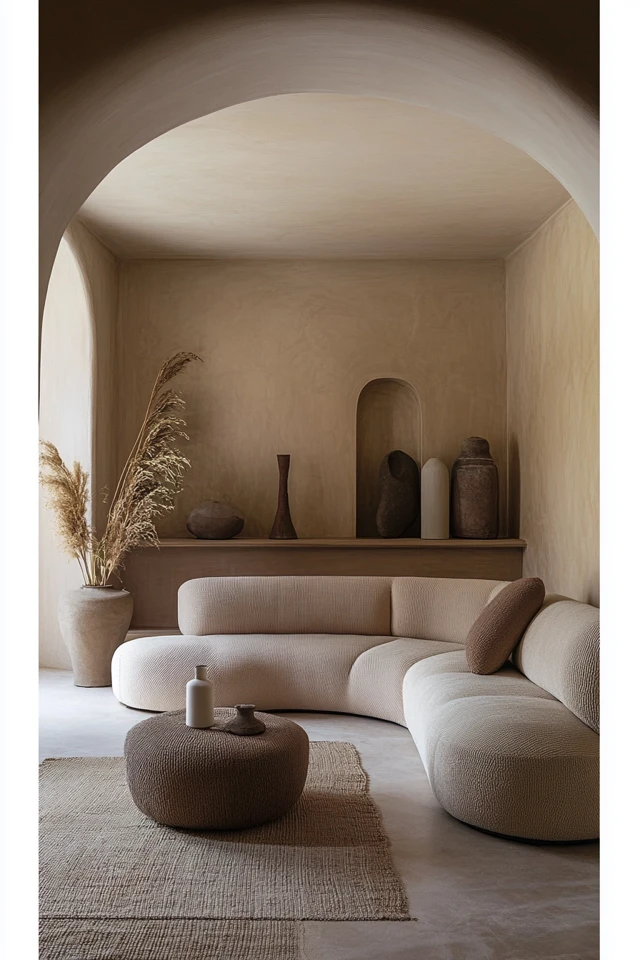
Why These Key Elements Work So Well Together
Curves work beautifully in design because they introduce movement, softness, and balance to a space dominated by straight lines. Here’s why these elements are so effective:
- Natural Flow: Curves mimic the organic shapes found in nature, creating a sense of ease and fluidity that feels calming and harmonious.
- Contrast with Lines: Curved elements balance the sharpness of straight lines, adding depth and variety to your design without overwhelming it.
- Softness and Comfort: Rounded shapes feel inherently more welcoming and cozy than angular ones, making them perfect for creating inviting spaces.
- Dynamic Focal Points: Curves naturally draw the eye, creating visual interest and movement that make a room feel dynamic and engaging.
- Versatility: Curves can be incorporated into any style, from the clean lines of modern design to the intricate details of traditional interiors.
Research in design psychology supports the idea that curves promote feelings of relaxation and approachability. By softening the angles in a room, you create an environment that feels both visually appealing and emotionally comforting.
How to Use Curves for a Softer Space Look: Step-by-Step
1. Incorporate Curved Furniture
- Choose furniture with rounded edges to introduce softness into your space:
- Opt for a sofa with curved arms or a rounded back.
- Use a circular or oval coffee table to break up sharp lines.
- Select chairs with gently curved backs or seats for added comfort.
2. Add Curved Architectural Features
- Highlight or add architectural curves for a bold yet elegant look:
- Emphasize existing arches in doorways, windows, or alcoves.
- Install an arched mirror or shelving unit for a subtle nod to curves.
- Use curved molding or wall panels to add depth and sophistication.
3. Layer in Rounded Decor
- Add smaller elements with curved shapes to tie the look together:
- Hang round mirrors or artwork with circular frames.
- Use decorative bowls, vases, or trays with rounded shapes.
- Incorporate a curved area rug to soften the room’s overall look.
4. Mix Curves with Straight Lines
- Balance curved elements with angular ones for a cohesive design:
- Pair a circular dining table with chairs that have clean, straight legs.
- Use curved lighting fixtures above a rectangular console table.
- Add a curved bench or ottoman to an otherwise linear seating arrangement.
5. Play with Circular Lighting
- Use lighting to introduce curves and set the mood:
- Install a globe pendant light or chandelier with round shades.
- Add table lamps with dome-shaped or spherical bases.
- Use curved wall sconces to soften harsh corners.
6. Create Movement with Patterns and Textures
- Incorporate curved patterns and textures to add subtle dimension:
- Use wallpaper with wavy or circular designs.
- Add textiles, like throw pillows or curtains, with flowing patterns.
- Choose flooring with curved or herringbone patterns for added interest.
7. Experiment with Rounded Layouts
- Arrange furniture to create circular or curved layouts:
- Place seating in a semi-circle around a central coffee table.
- Use curved sofas or modular pieces to create an organic flow.
- Arrange rugs and decor to highlight rounded focal points.
8. Choose Curved Outdoor Elements
- Extend the softness of curves to outdoor spaces:
- Use a circular patio table or curved garden benches.
- Add arched trellises or pergolas to soften sharp architectural lines.
- Incorporate curved planters or rounded landscaping features.
9. Use Color and Light to Enhance Curves
- Highlight curves with thoughtful color and lighting choices:
- Use contrasting colors to emphasize curved architectural features.
- Install accent lighting to highlight arches, round decor, or curved furniture.
10. Layer Curves for Depth
- Combine multiple curved elements to add layers and complexity:
- Use an arched mirror above a console table with rounded edges.
- Pair a circular rug with a curved sofa and a round coffee table.
- Layer curved decor on shelving to create a harmonious vignette.
FAQ
1. Why are curves important in interior design?
Curves add softness, movement, and balance to a space, making it feel more inviting and dynamic while complementing straight lines.
2. How can I incorporate curves without changing architecture?
Use curved furniture, decor, and lighting to introduce softness. For example, a round coffee table or an arched mirror can make a big impact without structural changes.
3. Do curves work in small spaces?
Yes! Curves can make small spaces feel more open and flow better. Choose rounded furniture or decor that fits the scale of the room.
4. Can I mix curves with angular designs?
Absolutely! The contrast between curves and straight lines creates a balanced, dynamic look. Just ensure the elements complement each other in style and scale.
5. How do curves affect the feel of a room?
Curves evoke a sense of comfort, relaxation, and elegance, making a room feel more approachable and harmonious.
Variations
- Modern Minimalism: Use clean-lined curved furniture, like a crescent-shaped sofa or a globe pendant light, for a sleek, understated look.
- Bohemian Charm: Incorporate wavy patterns, arched mirrors, and organic, curved decor to add softness to a layered, eclectic space.
- Rustic Warmth: Pair curved wooden furniture, like round dining tables or arched headboards, with natural textures for a cozy, rustic feel.
- Art Deco Drama: Use bold, geometric curves in furniture and decor, paired with metallic finishes and rich colors, for a glamorous, vintage-inspired look.
- Traditional Elegance: Incorporate arched molding, rounded upholstery, and classic circular motifs for a timeless aesthetic.
How to Showcase It
- Living Rooms: Use a curved sofa or a round coffee table to anchor the room, paired with rounded mirrors or soft, flowing curtains.
- Bedrooms: Add an arched headboard, curved bedside tables, and soft, circular decor to create a serene retreat.
- Dining Rooms: Choose an oval dining table with chairs that feature curved backs, complemented by a statement chandelier.
- Bathrooms: Incorporate a round mirror, curved lighting fixtures, and softly rounded fixtures to create a spa-like atmosphere.
- Outdoor Spaces: Use circular patio furniture, rounded landscaping features, and arched trellises to create a welcoming outdoor area.
Occasions to Feature It
- Everyday Comfort: Use curves in furniture and decor to create a soothing, inviting atmosphere for daily living.
- Entertaining Spaces: Incorporate curved seating or focal points to encourage conversation and interaction.
- Seasonal Decor: Highlight curves with seasonal touches, like wreaths or rounded vases filled with seasonal flowers.
- Special Gatherings: Use circular layouts and rounded decor to make spaces feel intimate and cohesive during events.
- Creative Retreats: Create a calming, flowing space for reading, meditating, or creating with curved elements.
Conclusion
Curves are the key to creating spaces that feel soft, inviting, and balanced. By introducing rounded furniture, architectural details, and decor, you can transform a room from stark and angular to dynamic and approachable.
The beauty of curves lies in their versatility—they work beautifully in every style, from modern minimalism to traditional elegance. Whether you’re highlighting arches, choosing rounded furniture, or layering circular decor, curves add a touch of sophistication and comfort to any space.
So embrace the flow of curves in your home. Whether you’re making subtle changes or bold statements, you’ll find that the gentle touch of curvature brings harmony, warmth, and timeless appeal to your design.

